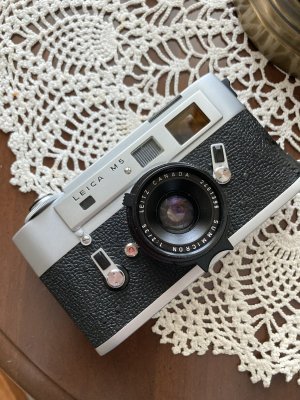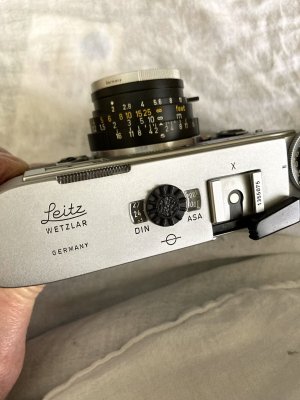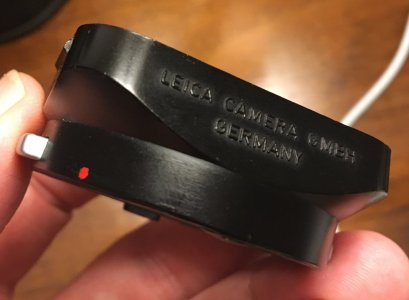It's a conundrum. In this
photo of the various versions from L-Camera-Forum, the V2 clearly has the aperture index at the 10 o'clock position (viewed from the rear of the lens). But I have a copy of the Leica Pocket Book, which combines V2 and V3 into the same entry, as optically they were so similar. The single lens photo has the index at the 12 o'clock position; it appears to be a V2. And if you did open up the aperture on the pictured lens all the way, you'd get awkward aperture tab/focus tab overlap. So there are some possible scenarios:
1. Leica produced lenses at various times with the aperture index at either 10 o'clock or 12 o'clock; it would be interesting to do a serial number vs. aperture index location survey to see if they "settled" on one being better (or producing fewer questions/complaints) over time.
2. The index came from the factory at 12 o'clock and some users got irritated by tangling up their left and right index fingers while simultaneously focusing and changing aperture, and so had the lens adjusted to 10 o'clock.
3. The index came from the factory at 10 o'clock, and some users got freaked out that the index was at that position, or bought the lens used and assumed there was something wrong with it because of this, and had it set to 12 o'clock.
I wouldn't be surprised if all three scenarios--plus one or more I didn't consider--play some role in where that index is oriented.
(Oh, aaaaand--there are the weird ones.
This lens, for example, has the aperture index at about the 1 o'clock mark, I can't imagine why. I would assume on the evidence it's probably not at all difficult--maybe loosening a few set screws?--to rotate the aperture index anywhere desired...or to where it ended up accidentally.)






